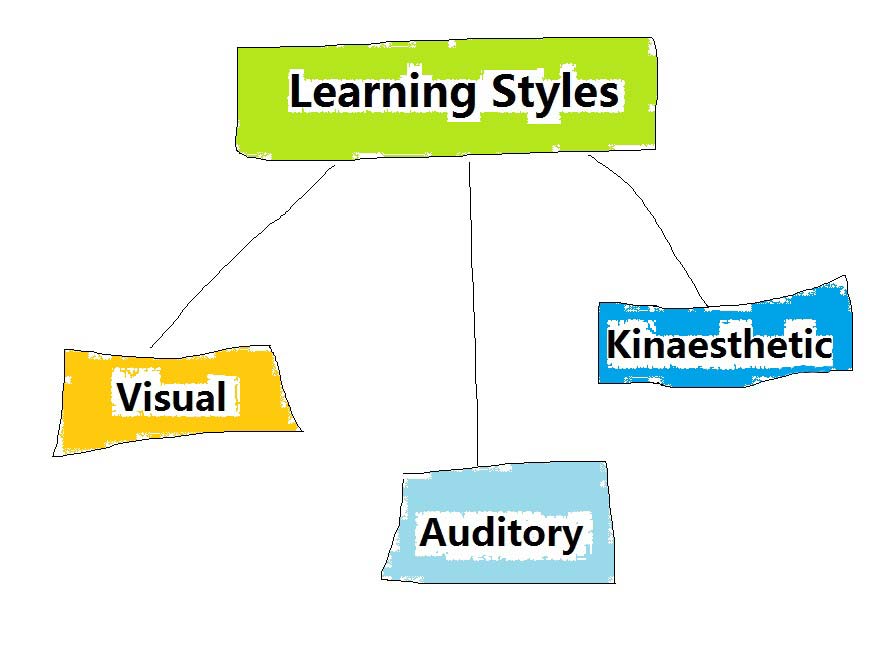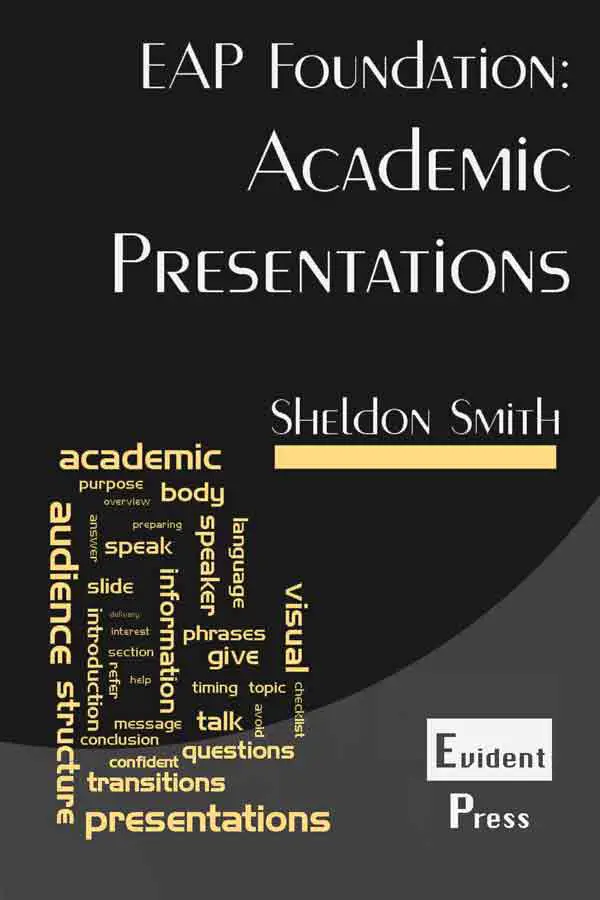Show AWL words on this page.
Show sorted lists of these words.


 







|
 Podcast is loading. Problems? Too slow? You can also access the Podcast by
clicking here.
Podcast is loading. Problems? Too slow? You can also access the Podcast by
clicking here.This message will disappear when then podcast has fully loaded.
Different learners have different preferences about how they understand, organise, and remember new information. Some prefer to study in groups, while others prefer to study alone. Some people prefer to think things through, while others prefer to be more active. Some learn best by listening, while others find it easier to remember information if they can see it. These differences in the way we like to learn are called learning styles. Understanding your own preferences can be an important first step in improving how you study.
This section will introduce some of the main learning styles: the Kolb learning styles, the Honey & Mumford styles, the VAK model, and the Dunn & Dunn model, as well as considering some other popular learning styles. It will also give you ideas about how learning styles could improve your study.
Different types of learning styles
There are many different theories about how learners prefer to study, and therefore many different types of 'learning styles'. Some studies suggest there are over 70 different models. Some of the major ones are discussed below.
Kolb learning styles
Educators first became interested in learning styles following Kolb's description of them in the mid-1970s. His learning styles are connected with the Kolb learning cycle. He suggested that although learners need to go through the same stages as they progress through the learning cycle, they often prefer some aspects of the cycle to others. This led Kolb to identify four learning styles, which he called accommodative, divergent, assimilative, and convergent. Each of these, and its connection to the learning cycle, is shown below.
Imaginative, good at generating ideas, sees things from different perspectives, interested in people and cultures.
Likes doing things, likes taking risks, performs well under pressure, solves problems intuitively (by feeling, not reason).
Theoretical, good at solving problems using reasoning, prefers abstract concepts, not so interested in people.
Practical, focuses on specific problems, unemotional, narrow interests.
Honey & Mumford learning styles
Another notable model is the Honey and Mumford model, which is widely used in the UK. This model adapts the Kolb learning styles. In this model, which was developed by Honey and Mumford following extensive research, the styles are directly aligned to the stages in the learning cycle (this contrasts with the Kolb learning styles, where the styles are from overlapping stages). The styles are activist, reflector, theorist and pragmatist, which relate to the do, reflect, conclude, and plan stages of the cycle. Each of these is described in more detail in the table below.
| Learning style | Relation to Kolb learning cycle | Characteristics | Skills |
| Activist | Prefers to do | Needs to be involved in new and challenging tasks, doesn't like to stop and reflect when a task is finished. | Good at speaking, solving problems, taking action. |
| Reflector | Prefers to reflect | Needs time to think things through and prepare for tasks, doesn't like deadlines. | Good at observing, listening, visualising, brainstorming. |
| Theorist | Prefers to make conclusions | Needs to question and explore the logic behind ideas, likes intellectual challenge. | Good at organising, classifying, comparing, contrasting, ordering. |
| Pragmatist | Prefers to plan | Needs to see a direct link between the learning and the real world. | Good at solving problems, experimenting, predicting, exploring. |

VAK model
Perhaps the most well-known model of learning styles (and the one used in this website) is the VAK model. VAK is short for Visual, Auditory, and Kinaesthetic, which are the three learning styles. Their meanings, and the differences between them, are shown below.
Visual
Visual learners learn best by seeing. The following will all aid visual learners in their study:
- pictures
- handouts
- charts, graphs, maps, time lines
- visual aids (e.g. PowerPoint, whiteboard)
- colour-coding (like this)
- reading
Auditory
Auditory learners learn best by listening. The following will aid this type of learner:
- lectures
- recordings (e.g. mp3, podcasts)
- discussions
- debates
- repeating words
Kinaesthetic
Kinaesthetic learners learn best by moving and touching. Examples of activities that will help this type of learner are:
- physical movement
- projects
- experiments
- field trips
- frequent breaks
Dunn & Dunn model
The Dunn & Dunn model is one of the most popular and widely used models in the USA. It describes individuals' reactions to 21 different elements, such as sound, light, motivation, individual work. Each of these elements is grouped under five dimensions: environmental, emotional, sociological, physiological, and psychological. Some other learning styles, e.g. the VAK learning styles, are included within these headings.
The five dimensions and the 21 elements are shown below, together with some key questions for students and teachers to consider.
| Dimension | Elements | Key questions |
| Environment | Sound, light, temperature, design |
• Does the student prefer a noisy or quiet environment? • Does the kind of lighting make a difference? • Does the student like to study in a cool or warm environment? • What kind of room design works best? A formal environment with rows of desks? An informal one with sofas and pillows? |
| Emotional | Motivation, persistence, responsibility, structure |
• Does the student need a lot of emotional support and encouragement? • Will the student persist on learning tasks or give up easily? • Can the student assume responsibility for their learning? • Does the student need step-by-step instructions, or do they prefer more open-ended tasks? |
| Sociological | Individual, pair, peers, team, adult, varied |
• Does the student prefer to work alone or with others? • Does the student prefer pairwork or groupwork? • Does he/she prefer a peer or the authority of an adult? |
| Physiological | Perceptual, intake, time, mobility |
• Is the student a
visual,
auditory, or
kinaesthetic learner? • Does the student like to snack while learning? • When is the best time of day for learning? Morning? Midday? Evening? • Does the student prefer to sit still or move around while learning? |
| Psychological | Global/ analytic, hemisphericity, impulsive/ reflective | • Does the student prefer to start on a problem immediately, or take time to reflect on it first? |
Other types of learning style
As noted above, there are over 70 different models of learning styles, too many to list here. Other models include adaptations of the VAK model, e.g. by dividing the kinaesthetic style into 'tactile' learners (who enjoy touching and manipulating) and pure 'kinaesthetic' learners (who simply enjoy moving while learning), or by adding another dimension, 'reading', in which case the model is referred to as the VARK model. Some models combine or adapt elements of both the VAK and Dunn & Dunn models, e.g. by consider visual as well as social learners, or by adding an 'olfactory' style for learners who find that smells and taste can add to learning.
How to use learning styles to improve your study
With so many styles, it can be confusing to identify your own preferred style, let alone consider how to make use of this information. An important first step is to be aware of the different learning styles that each of us has. Just because everyone else in the classroom prefers to work in groups in a loud, bright environment, doesn't mean you do too. Think about the models above and decide which one you find most convincing, and try some online questionnaires to help you to identify your own style (although you probably know yourself well enough to know what your preferences are). Try to adapt your study to take your preferred styles into account, e.g. by using more images and pictures if you are a visual learner, or by studying outside if you prefer natural to artificial light. There is no right or wrong learning style. Understand yours, and use it to help you learn.
References
Andreou, E., Andreou, G, and Vlachos, F. (2008). Learning Styles and Performance in Second Language Tasks, TESOL Quarterly, Vol. 42(4) pp. 665-674
Boström, L. and L.M. Lassen (2006). Unravelling learning, learning styles, learning strategies and meta-cognition, Education + Training, Vol 48(2/3), pp. 178-189
Dunn, R. (2000). Capitalizing on College Students' Learning Styles: Theory, Practice, and Research, in Griggs, S. and Dunn, R. (eds.), Practical Approaches to Using Learning Styles in Higher Education, Westport: Greenwood Press, pp. 3-18
Kolb, D. (1984). Experiential learning: experience as the source of learning and development, London: Prentice-Hall
Reid, J.M. (1987). The Learning Style Preferences of ESL Students, TESOL Quarterly, Vol. 21(1), pp. 87-111
Next section
Read more about time management in the next section.
Previous section
Read the previous article about the learning cycle.
Exercises & Activities Some ways to practise this area of EAP
You need to login to view the exercises. If you do not already have an account, you can register for free.




